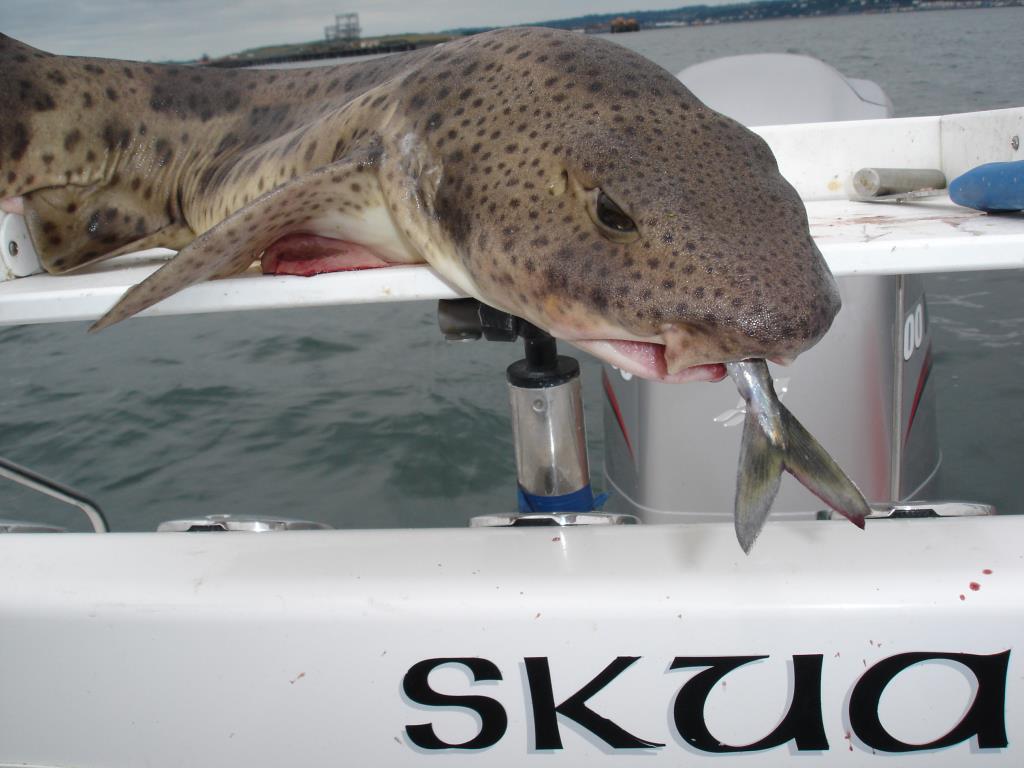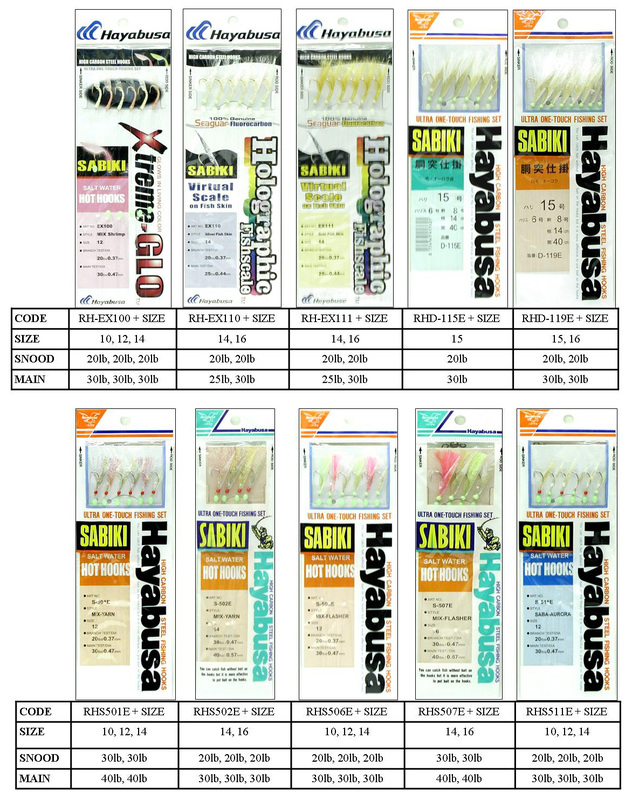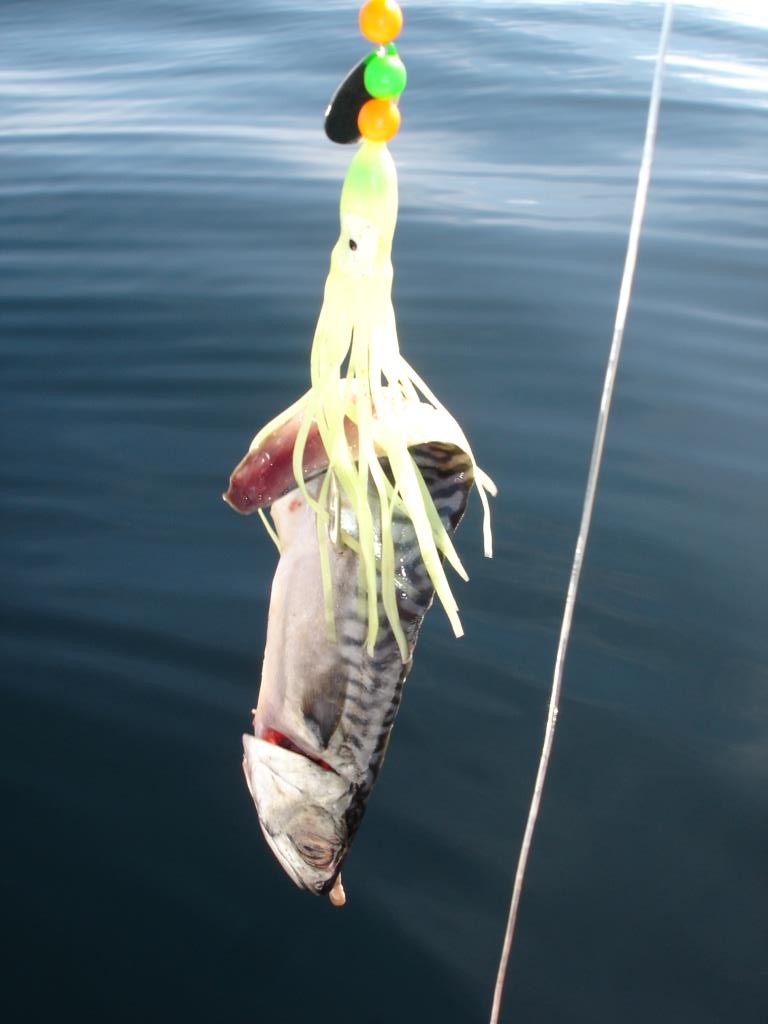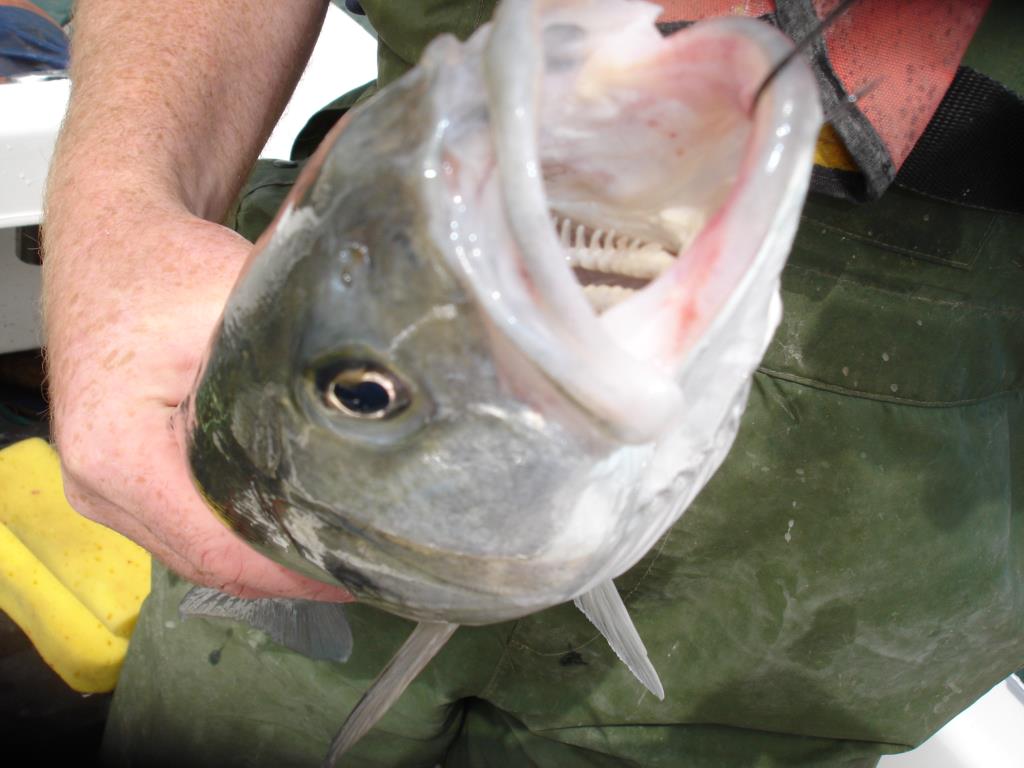Jim Clohessy reveals how to obtain the most from the best all-round sea bait – mackerel!


Nom Nom …. Mackerel!
Marvellous Mackerel!
Jim Clohessy reveals how to obtain the most from the best all-round sea bait – mackerel!
Who says that before going boat fishing you must go through the tough work that is gathering bait? Fair enough there are some species that will only respond to a juicy peeler crab or a wriggly rag worm, but the fact is that most species will willingly take a well presented piece of fresh mackerel. Many skippers who cannot gather their own bait lament at the cost of store purchased tit bits. Peeler crab prices are such you would think they were made of gold! The prices charged for ragworm and lug means many only purchase when they have a special target species in mind. Still if you are busy in work and have no choice buying bait is better than having no bait. However in the summer months there is no excuse! When mackerel are plentiful there is plenty that can be done and plenty of fish that can be targeted with mackerel.

Hard to beat for bait or grub!
First thing that needs to be done is catching the bait. We have written about mackerel and successful ways of caching them before but it no harm to mention these again: Hokeyes, sabikis and feathers of different colours and sizes are proven mackerel bashers. Most skippers have favourite areas where they dip for mackerel. If a skipper fails to catch on his favourite mark then it is best to move around watching the water for signs of seagull activity or other signs on the water that can give away the presence of macks. Mackerel are a fish that are constantly on the move, they have little choice, having no swim bladder means they will sink if they do not swim. This is why you get mackerel holding areas rather than mackerel marks per se. I follow a normal ritual when searching out our bait. If we have knowledge of the area we will head for the ground we know. We will try different sets of lures until we find the one the mackerel are liking on the day. Different lures may work better on different days but some lures are simply just brilliant catchers. When water clarity is not great the bigger lures work better. Standard hokeyes do well as do pink flashers and bigger sabikis. When the water is clear a Mustad shrimp rig or small set of sabikis can be deadly. Any sabiki made by Hayabusa will massacre mackerel and will stay in great shape trip after trip as they are made from high quality components. Once you have located the depth the mackerel are shoaling it is normally an easy job to get your quota. If the mackerel are thin on the ground we will often put the engine in gear and creep slowly forward in order to cover more ground. It seems to be the case here in Cork that prolonged periods of offshore wind tends to drive the shoals further out than normal. The bottom line with mackerel is that the process is a hunt. You must keep moving around and searching the water column until you succeed.

Hayabusa!
If you paid good money for your bait you would keep that bait in good condition until it was time to use it. Mackerel are free but they deserve as much attention as store bought bait. Keep the fish out of the sunshine; ideally put them into a cooler box. The Warrior 175 has a fish hold under the floor and this area remains very cool as it is under the waterline. The hold is dark and is a great storage area. If we are using our mackerel within a short time we keep them in a covered box on deck. The covered box serves a couple of purposes. The lid, with a small hole in it, serves to keep the sun off the bait and as importantly it prevents the mackerel from splashing blood and scales around the boat. As most dinghy anglers will testify to, once mackerel guts and scales dry in they can be very difficult to remove from an otherwise immaculate boat.

Shark bait- Marvelous Mackerel!
So now that you have the bait what can you do with it? The options are as varied as the species that will take a mackerel. Certainly the most popular method is to drift over reefs or broken ground using paternosters or legers. While there are times when a home made trace is the best tool for the job more often that not a store bought trace will do the business as well as the home made work of art. Hokeyes and variations are probably one of the better and more popular traces. There are many different makes so it is best to examine the different types to be sure you are getting a rig of good quality at a fair price. I find it is best to buy these traces in bulk so as to get the best deal; they are after all the trace you will use and loose most of! If you look into my tackle box you will find various different variations of a three hook paternoster, certainly my rig of the moment are Hayabusa sabikis in various styles. These are expensive rigs but they are certainly the highest quality traces of these types that I have encountered. We have used Achill raiders and the likes for years and again these are proven fish catchers. There are a huge range of Dennett rigs as well as a huge range of Shamrock rigs that will work well for any fishing except maybe wreck fishing. Keep an eye on snood thickness and hook quality.

Mackerel account for more bendy rods than any other bait!
If these style traces are the backbone of the drifters tackle box then the bait is the flesh. Baiting these traces with slivers of fresh mackerel will bring them alive. Here you must think what the lure is trying to imitate: small fish. To this end it is best to attach a thin sliver of mackerel that is going to flutter and move as the boat drifts. After taking the fillets off a mackerel we will often remove some of the flesh from the fillet so the slivers are thinner, more flexible and look better on the hook. We like to cut our bait into tapered or triangular shapes that mimic the shape of a small fish. The beauty of fresh mackerel is the toughness of its skin. If they could make boots from mackerel skin they would last a lifetime! Fresh mackerel will stay on the hook well. It is best to hook your sliver just once to allow it to move freely on the hook. Do not be afraid to experiment with the size of the bait. Sometimes less is more and smaller strips will induce more strikes. Sometimes bigger baits are the only way to get through shoals of mackerel that can be a curse once you have caught your bait! If you are using a bigger size hook do not be afraid to put a half of a fillet on you hooks. Most of your target species have big mouths and even bigger appetites and will have no problem engulfing a half fillet bait. We recently had a bass of about two pounds take a live mackerel that was nearly as long as the bass, greedy bugger! While modern trends see us fishing more for pollack and coalies using plastics and jigs you should not forget the use of a leadhead and silver belly piece of mackerel. Often you may find that the movement combined with the extra scent might be just the combination to get the fish feeding. Drifting over different types of ground with mackerel baited paternosters can yield pollack, cod, wrasse, coalies, haddock, gurnards and flatties; if the drift is very slow congers and doggies will surely make an appearance.

Red Gurnard find mackerel dressed with a bit of bling irresistible!
Drifting over clean ground using a mackerel baited flowing ledger trace is a satisfying and exciting alternative to drifting with paternosters. While you may pick up many of the same species you are now also putting your self in the way of the flatties. Plaice are partial to mackerel, especially in open water, and if you are lucky enough to encounter ground suitable, the best bait for turbot or brill is mackerel. A ledger rig is your only man if you want to target the gurnards. Red gurnards especially are suckers to a strip of mackerel fished on a rig that includes beads and spinner blades. In ground where there are read there is always the chance of a megrim.

The best ling bait you will get!
When you have filled you boots with edible fish and want a change of tactic it is worth anchoring. Try anchoring on the reef that you have been catching some fish on. Take the best guess you can on the direction of the wind and steam upwind from the mark for about one hundred to two hundred feet. Ease out the anchor rope until the wind brings you back onto your mark. At this stage you may find that the tide is also having a bearing on you position on the reef and you may have to re-anchor but if the wind and tide are in the same direction the job of positioning the boat over the reef is made easy. So what can you do with mackerel here? Ask a Corkman and he will tell you to get out your baited pirks and fish for congers! To be fair there is nothing quite like a conger session. The simplicity of the fishing is the beauty of it. Congers probably offer the most sport for the least effort of all our species. There really is only one bait for congers and that is fresh mackerel. Bait preparation for congers is simple as well. You choices are a mackerel flapper, a half fillet or a large strip. A flapper is a complete fish with the backbone removed so what remains are two fillets attached to the head that can flap around in the tide and waft the irresistible aroma around the area. My personal choice for congers or drifting wrecks for ling is a half fillet. Here the entire fish is split down the middle including the head. You will find that this bait is very flexible and has a huge amount of blood that serves as an added attractant. The use of big baits for congers deters the ever present dogfish and if the water is deep enough you may find that you will catch ling on baits presented for congers, a welcome bonus.

A baited pirk – Conger catcher!
Anchoring on clean ground is a little more specialised. The reason for this is that it is more difficult to locate fish holding areas. Banks and troughs are great if you can locate them and even though many of the fish will prefer different baits you will find that you can catch more fish at anchor with mackerel than when drifting. Clean sandy ground inevitably will attract dogfish. Doggies can be fun in small doses and you can always have a craic onboard by bringing a competitive edge to the doggie fishing When the dogs move in treble shots are not unusual and if you have put down some chum in a bag the dogs can descend like a plague of locusts. Us? We’ll just move on to another mark or else increase our bait size to put them off. The best bait for dogs? Yes it is fresh mackerel. There are some times when doggies are a hazard of the job. Fishing for rays tends to be one of these times. Fishing at anchor using a single 3/0 hook on a simple ledger is an effective ray tactic. It is hard to imagine a thornback ray getting much mackerel to eat in the course of their daily existence but thornies certainly love mackerel fillet. I especially like the “last” of a mackerel fillet for rays. The “last” is the triangular piece of the fillet near the tail and this presents well on the hook. I will either hold the bait in position by double hooking thorough the narrow piece or by whipping the narrow end on the shank of the hook with a little bait elastic. On banks where blonde rays are prevalent a bigger bait mounted on a 6/0 hook will deter the doggies for a while and mackerel is one of the better baits for blondes.

Bass Love’m Live!
We often shore our shark fishing experiences with you. The bait of choice for all the sharks is fresh mackerel. Whether it is fast running tope or dogged blue shark you are targeting mackerel will provide the most and consistent hook ups. From the bait to the rubby dubby mackerel is the most important link in the chain. It is not just the bigger sharks that love mackerel; I have never caught a spurdog on anything else other than mackerel. Huss will take a variety of baits but we have found that mackerel is as good as any other combination we have tried. The whole area of live baiting using mackerel should take a whole article of its own. Whether wrecking or drifting reefs a live mackerel attached to a 6/0 hook can be devastatingly effective. Live mackerel is a proven method of bass catching though it is not often used with most anglers preferring sand eel or crab on the biat front and of course lures of all shapes and sizes.

Simple strips cut thin are better than chunks!
Much of our fishing on SKUA involves fishing with crab and worm baits. Recent years sees us using more artificial lures for different species but without fail the most successful bait on SKUA is fresh mackerel. Mackerel is probably responsible for some of our more memorable days out. If given a choice, we would take fresh mackerel as bait over all others because of the variety of species that can be targeted. From wrecking to reefing the mackerel is king, get out and get experimenting. Carve your fish carefully and present realistic baits rather than chunks. We have no doubt that your catch rates will increase and your species count will increase.

Great for wrecks!
* This article is an edited version of one that appeared in Irish Angler Magazine in 2008



